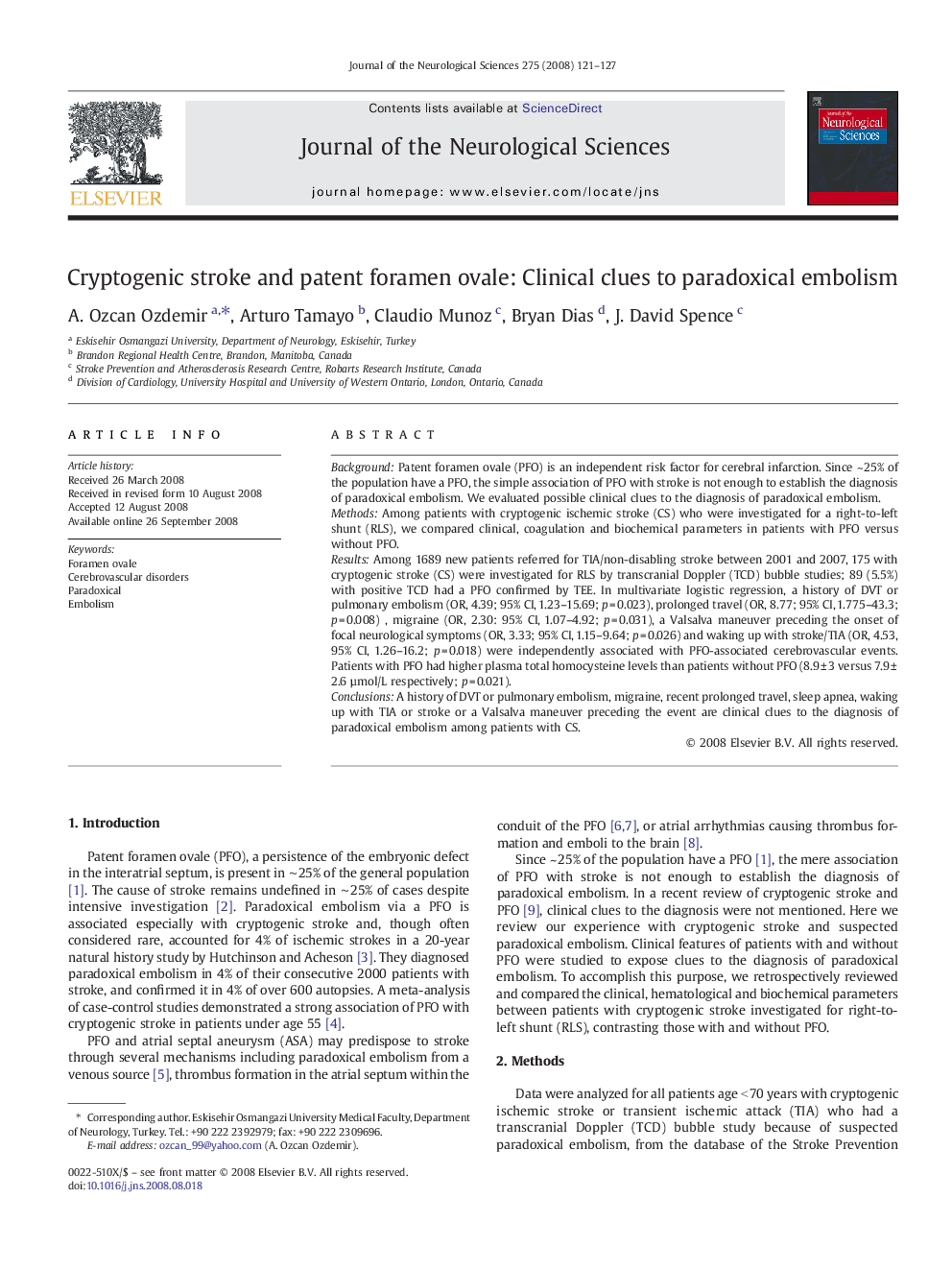| Article ID | Journal | Published Year | Pages | File Type |
|---|---|---|---|---|
| 1915607 | Journal of the Neurological Sciences | 2008 | 7 Pages |
BackgroundPatent foramen ovale (PFO) is an independent risk factor for cerebral infarction. Since ~ 25% of the population have a PFO, the simple association of PFO with stroke is not enough to establish the diagnosis of paradoxical embolism. We evaluated possible clinical clues to the diagnosis of paradoxical embolism.MethodsAmong patients with cryptogenic ischemic stroke (CS) who were investigated for a right-to-left shunt (RLS), we compared clinical, coagulation and biochemical parameters in patients with PFO versus without PFO.ResultsAmong 1689 new patients referred for TIA/non-disabling stroke between 2001 and 2007, 175 with cryptogenic stroke (CS) were investigated for RLS by transcranial Doppler (TCD) bubble studies; 89 (5.5%) with positive TCD had a PFO confirmed by TEE. In multivariate logistic regression, a history of DVT or pulmonary embolism (OR, 4.39; 95% CI, 1.23–15.69; p = 0.023), prolonged travel (OR, 8.77; 95% CI, 1.775–43.3; p = 0.008) , migraine (OR, 2.30: 95% CI, 1.07–4.92; p = 0.031), a Valsalva maneuver preceding the onset of focal neurological symptoms (OR, 3.33; 95% CI, 1.15–9.64; p = 0.026) and waking up with stroke/TIA (OR, 4.53, 95% CI, 1.26–16.2; p = 0.018) were independently associated with PFO-associated cerebrovascular events. Patients with PFO had higher plasma total homocysteine levels than patients without PFO (8.9 ± 3 versus 7.9 ± 2.6 µmol/L respectively; p = 0.021).ConclusionsA history of DVT or pulmonary embolism, migraine, recent prolonged travel, sleep apnea, waking up with TIA or stroke or a Valsalva maneuver preceding the event are clinical clues to the diagnosis of paradoxical embolism among patients with CS.
